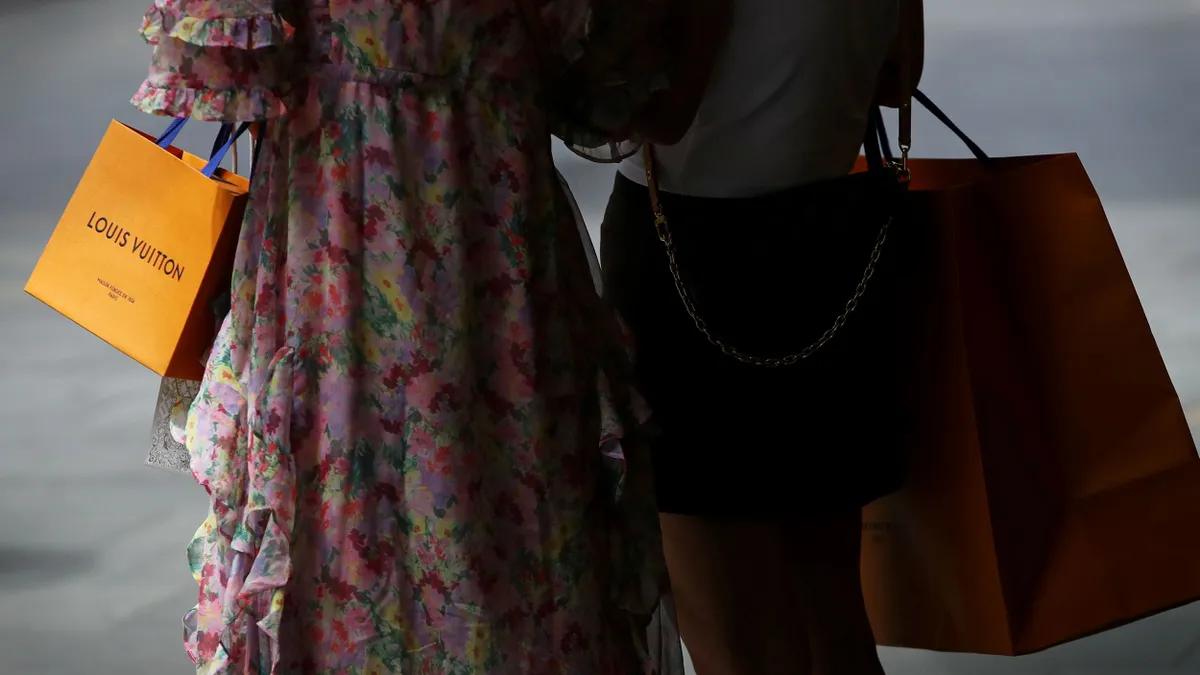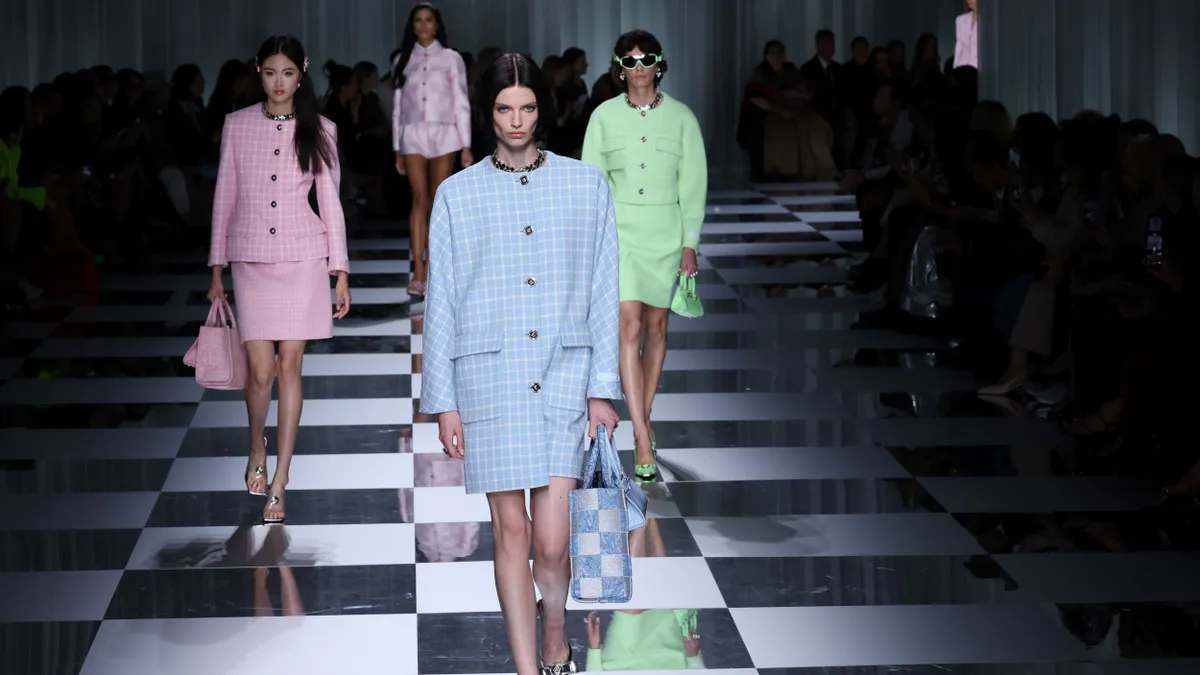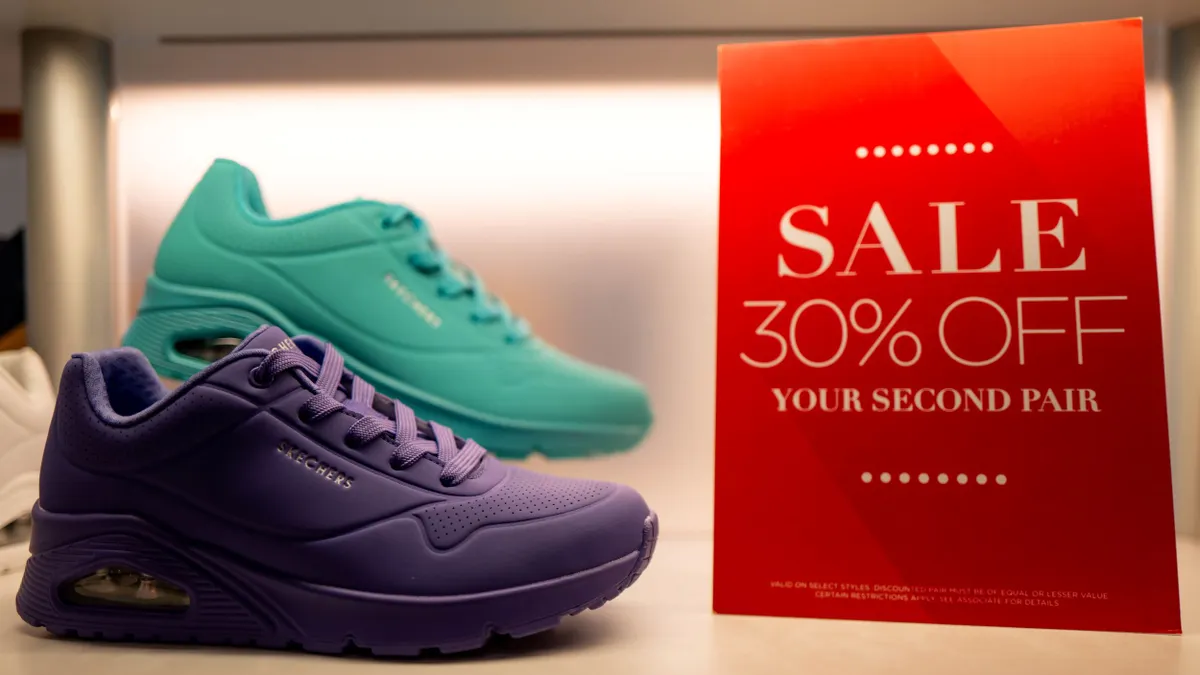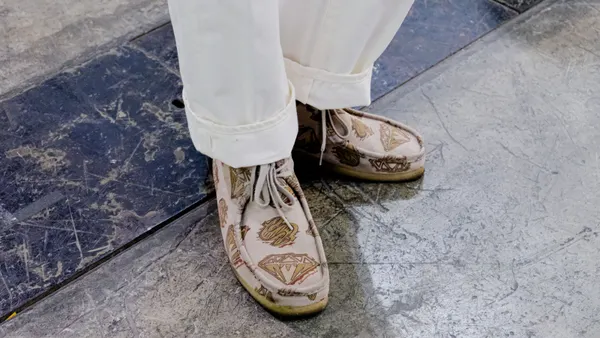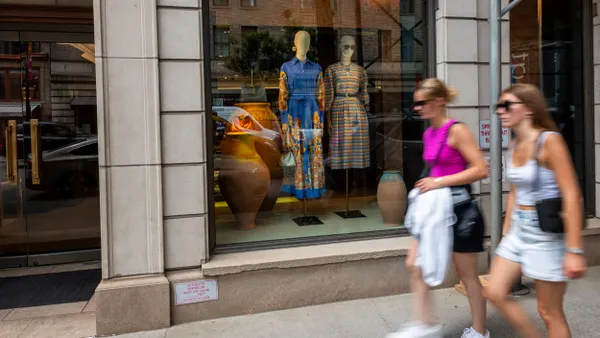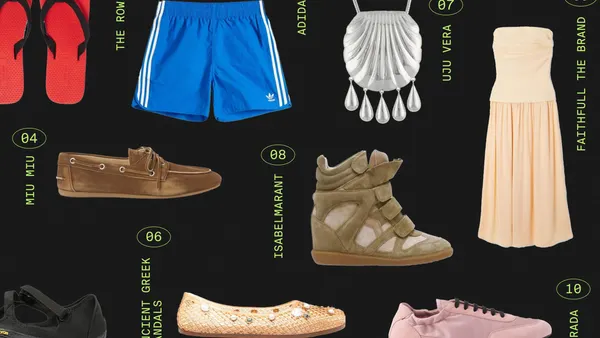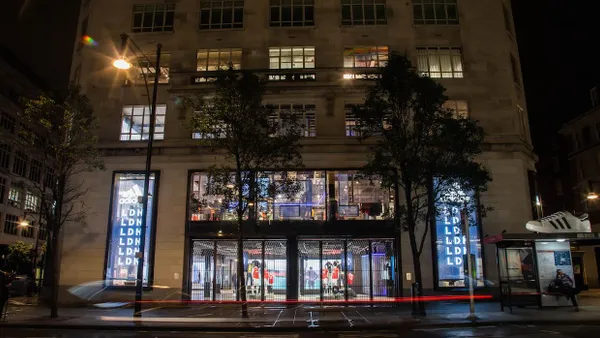Dive Brief:
- Consumer spending on apparel, accessories and footwear fell 3% year over year in 2024, according to a Monday report from Consumer Edge.
- Fast fashion, luxury and the combined category of footwear/athletic apparel underperformed during the period. However, spending on consignment and thrift apparel grew by 1%.
- Despite the results, spending in some struggling apparel subsectors accelerated in Q4 2024, which could signal a brighter outlook for 2025, Consumer Edge said in the report.
Dive Insight:
The insights follow a similar report from Consumer Edge released last month, which showed that apparel resale outpaced traditional retail spending in 2024 and was projected to remain strong.
For the new report, Consumer Edge gathered overall sales data from a panel of about 40 million consumer credit and debit cards, according to a Consumer Edge spokesperson.
“Despite broader spending declines, brands implementing affordability, sustainability and direct consumer engagement are winning consumer loyalty,” Michael Gunther, vice president and head of insights at Consumer Edge, said in an accompanying press release. “Navigating these evolving trends will be essential for companies aiming to adapt and excel in the coming year.”
By brand, Depop, Vinted and Goodwill helped the consignment and thrift category rise, while “newcomer brands” such as Quince, Sézane and Primark saw strong growth in the family apparel category, per the report. Established brands including Gap, Old Navy, American Eagle and Abercrombie & Fitch had steady performances.
Shein and Uniqlo saw “robust growth” during the period, despite the fast fashion category as a whole dropping 1%, per the report. Shein’s growth has decelerated, but it still retains market share. The report noted that consumer spending on the brand exceeds that at Zara and H&M combined.
In athleticwear, spending fell 6%. Hoka and Alo Yoga gained market share while Nike and Adidas struggled to maintain growth, per the report.
Luxury sub-industries, including watches and jewelry, saw modest improvements from Q3 to Q4. Jewelry sales accelerated to flat year-over-year growth, which Consumer Edge attributed to strong performance from brands including Van Cleef & Arpels and Cartier.
Reduced apparel spending was most pronounced among middle income consumers, which the report defines as those in the $60,000 to $150,000 annual income bracket. Not much change was seen from high- and low-income consumers.



